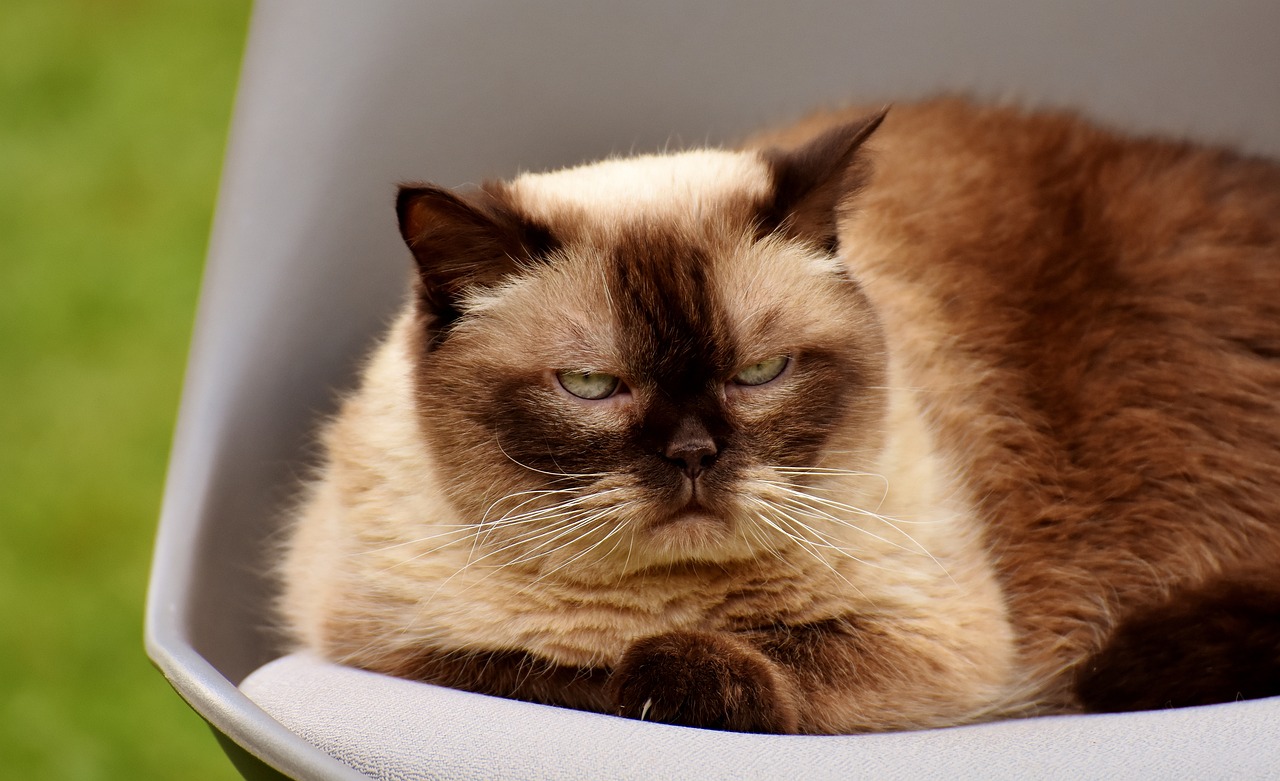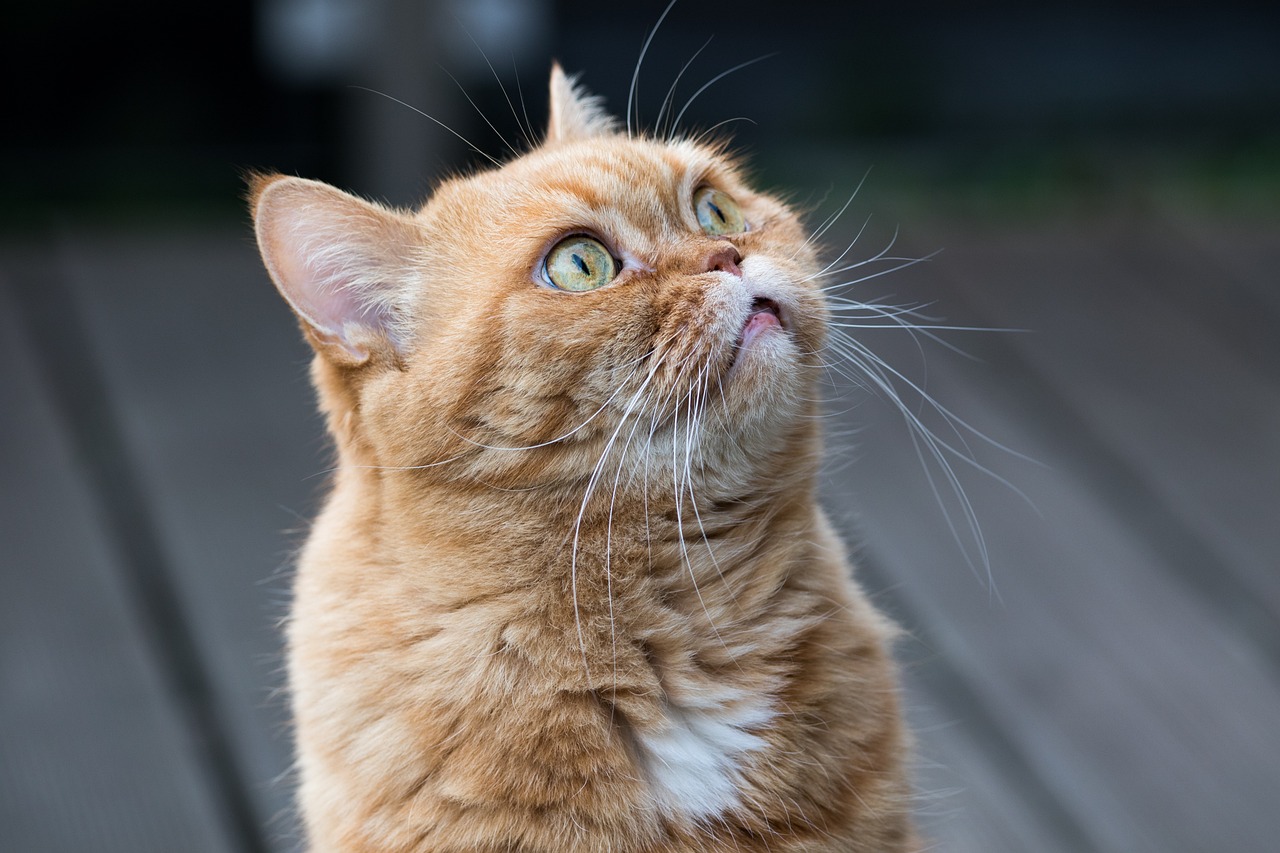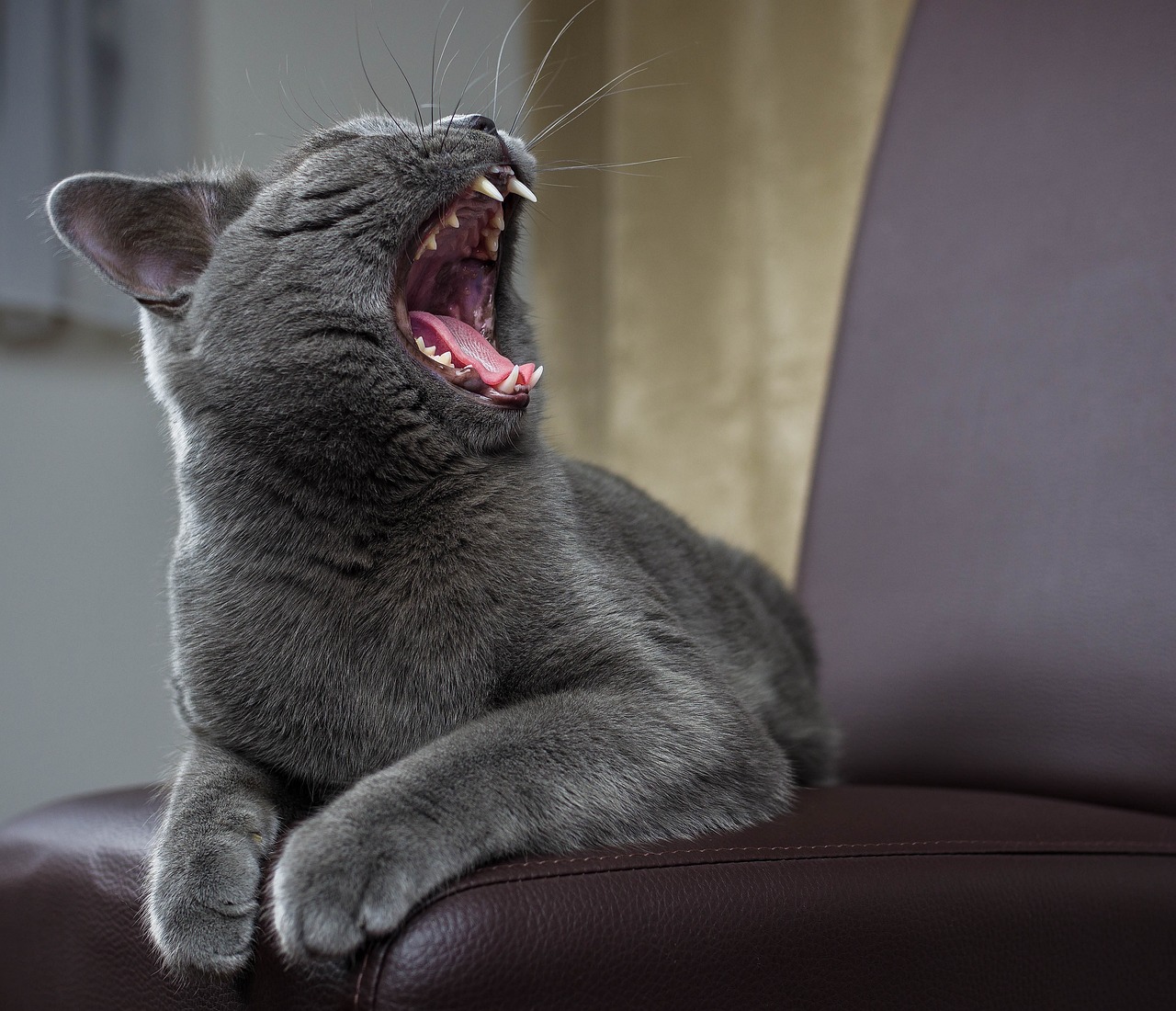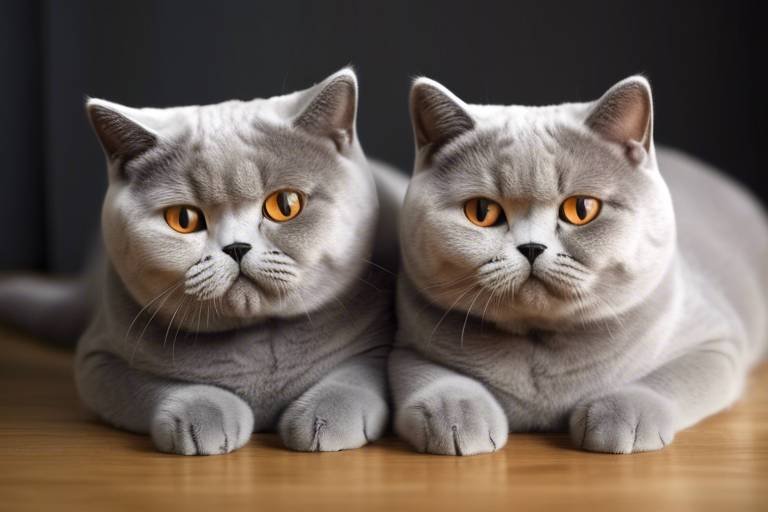Understanding the Gentle Nature of the Exotic Shorthair
The Exotic Shorthair is not just another breed of cat; it's a delightful blend of charm, affection, and personality that can easily capture anyone's heart. Imagine a plush little ball of fur that purrs like a motorboat and follows you around like your shadow—that’s your typical Exotic Shorthair! Known for their gentle temperament, these cats are the epitome of sweetness and companionship. Whether you’re a seasoned cat owner or a first-time pet parent, the Exotic Shorthair offers a unique experience that can enrich your life in countless ways.
Originating from a desire to create a short-haired version of the beloved Persian cat, the Exotic Shorthair was developed in the 1950s and quickly gained popularity due to its adorable features and easy-going nature. With their round faces, large expressive eyes, and compact bodies, they are often described as “teddy bears” in feline form. But it’s not just their looks that make them special; it’s their gentle nature that truly sets them apart from other breeds.
Exotic Shorthairs are known for their calm demeanor and affectionate disposition. They thrive on human interaction and are incredibly sociable, making them perfect companions for families, singles, and seniors alike. Unlike some breeds that may be standoffish or aloof, Exotic Shorthairs are often described as “people-oriented,” seeking out attention and affection from their owners. They love to curl up on your lap, nuzzle against you, and even follow you from room to room, ensuring that they are never too far from their favorite humans.
In terms of their playfulness, these cats are like children in many ways. They enjoy engaging in interactive play, whether it’s chasing a feather toy or batting around a ball. Their playful antics can bring endless joy and laughter to your home. However, they also know when it’s time to relax, often lounging around in the sun or nestled in a cozy spot. This balance of energy and calmness makes them a joy to have around.
But owning an Exotic Shorthair isn’t just about their charming personality; it’s also about understanding their needs. These cats require regular grooming to maintain their beautiful coats and ensure they stay healthy. Additionally, they thrive in environments where they can interact with their human companions and have plenty of mental stimulation. If you’re considering adding an Exotic Shorthair to your family, be prepared to provide love, attention, and a little bit of care to keep them happy and thriving.
In summary, the Exotic Shorthair is a breed that embodies the essence of companionship. Their gentle nature, playful spirit, and affectionate behavior make them a perfect addition to any home. Whether you’re looking for a cuddly companion to snuggle with on the couch or a playful partner to share your day with, the Exotic Shorthair is sure to fill your life with joy and love.
- Are Exotic Shorthairs hypoallergenic? No, while they have a shorter coat, they still produce allergens.
- How much grooming do they require? Regular brushing is needed to keep their coats healthy and reduce shedding.
- What is their lifespan? Exotic Shorthairs typically live between 12 to 15 years with proper care.
- Are they good with children and other pets? Yes, they are generally very sociable and get along well with both kids and other animals.

The Origins of the Exotic Shorthair
The Exotic Shorthair is a breed that beautifully marries the elegance of the Persian cat with the practical benefits of a short coat. But where did this delightful breed come from? The story of the Exotic Shorthair is not just about breeding; it's about a quest for the perfect companion. Developed in the 1950s in the United States, the Exotic Shorthair was created by crossing Persians with American Shorthairs. The goal was to produce a cat that retained the Persian's stunning appearance but required less grooming due to its short, plush coat.
Over time, this breed gained traction among cat lovers and families alike, not just for its looks but also for its gentle temperament. The Exotic Shorthair quickly became a favorite in cat shows, captivating judges and audiences with its round face, large eyes, and stocky build. Its popularity soared, leading to a growing community of enthusiasts who appreciated not only the breed's aesthetic qualities but also its affectionate nature.
Interestingly, the Exotic Shorthair's rise to fame wasn't without its challenges. Initially, there was some skepticism about whether this new breed could truly embody the traits that made Persians so beloved. However, breeders worked diligently to ensure that the Exotic Shorthair not only looked like a Persian but also shared its gentle and loving personality. This endeavor was a testament to the dedication and passion of cat breeders who sought to create a breed that could thrive in a family setting while still being a showstopper on the cat show circuit.
As the Exotic Shorthair continued to gain recognition, it became clear that this breed was more than just a pretty face. They were known for their playful and sociable nature, making them ideal companions for families, singles, and seniors alike. Their gentle demeanor and adaptability to various living situations only added to their charm, solidifying their place in the hearts of cat lovers around the world.
Today, the Exotic Shorthair stands as a symbol of the perfect blend of beauty and temperament. Whether they are curling up on your lap or playfully chasing after a feather toy, these cats bring a unique joy to any home. Their origins remind us that sometimes, the best companions come from a thoughtful blend of traits designed to enhance our lives.

Physical Characteristics
The Exotic Shorthair is often described as a living plush toy, captivating the hearts of cat lovers everywhere with their unique physical traits. These cats are a delightful blend of beauty and charm, boasting a stocky build that gives them a robust appearance. Their bodies are compact and muscular, with a solid frame that exudes strength and health. If you've ever seen one, you might be reminded of a cuddly teddy bear, just waiting for a warm embrace.
One of the most striking features of the Exotic Shorthair is their round face, which is often adorned with a short, flat nose and large, expressive eyes. These eyes can come in a variety of colors, ranging from deep copper to striking blue, making each cat unique. The roundness of their face adds to their overall adorable appeal, making it hard to resist their charm. Imagine looking into those big, soulful eyes; it's like getting lost in a sea of affection.
Their plush coats are another hallmark of the breed. Soft to the touch, the fur is dense and luxurious, often requiring regular grooming to maintain its pristine condition. Exotic Shorthairs come in a variety of colors and patterns, from solid shades to intricate tabbies and even striking bicolors. This variety allows owners to choose a feline companion that perfectly matches their personality and home aesthetic.
In terms of size, Exotic Shorthairs typically weigh between 8 to 15 pounds, with males generally being larger than females. Their sturdy legs and rounded paws contribute to their overall well-proportioned look, making them appear even more endearing. It's important to note that their physical characteristics not only make them visually appealing but also play a role in their gentle demeanor. Their calm and collected nature often reflects their solid build, giving them an air of confidence that is truly captivating.
To summarize, the physical characteristics of the Exotic Shorthair can be encapsulated in the following table:
| Characteristic | Description |
|---|---|
| Body Type | Compact and muscular |
| Face Shape | Round with a flat nose |
| Eye Color | Varies (copper, blue, etc.) |
| Coat Type | Dense and plush |
| Weight Range | 8 to 15 pounds |
In conclusion, the Exotic Shorthair’s physical characteristics are not just about aesthetics; they contribute to the breed's overall temperament and behavior. Their sturdy build and soft, plush fur make them not only a joy to look at but also a delight to cuddle with. If you’re considering adding one of these charming cats to your family, be prepared for a companion that’s as beautiful on the outside as they are gentle on the inside.

Temperament and Behavior
The Exotic Shorthair is a breed that truly embodies the phrase "gentle giant." With their plush, velvety coats and round, expressive faces, these cats are not just a feast for the eyes; they are also a delight to the soul. One of the most remarkable aspects of the Exotic Shorthair is their affectionate nature. They thrive on human interaction and are known for their loving demeanor, making them perfect companions for families, singles, and seniors alike. Imagine coming home after a long day and being greeted by a soft purr and a gentle nuzzle—this is the magic that an Exotic Shorthair brings into a home.
When it comes to their behavior, Exotic Shorthairs are often described as laid-back and easygoing. They enjoy lounging around, but don’t let their relaxed disposition fool you; they are also playful and curious. A simple feather toy or a crumpled piece of paper can spark their interest and lead to hours of entertainment. They love to engage in playtime, which not only keeps them physically active but also mentally stimulated. This balance of calmness and playfulness makes them adaptable to various living situations, whether it’s a bustling household or a quieter apartment.
Socially, Exotic Shorthairs are typically friendly and outgoing. They often get along well with children and other pets, making them a great addition to any family. Their gentle nature means they can tolerate the playful antics of kids without becoming overly stressed. However, it’s essential to supervise interactions between young children and pets to ensure everyone remains safe and comfortable. In fact, their sociable behavior can be likened to that of a loyal friend—always there to lend a comforting presence when needed.
Moreover, Exotic Shorthairs are known for their vocalizations. While they are not as chatty as some other breeds, they do have a soft, sweet voice that they use to communicate their needs and desires. Whether it’s a gentle meow when they want attention or a soft purr when they are content, their sounds can be incredibly endearing. Understanding these vocal cues can enhance the bond between you and your furry friend, making for a more harmonious living environment.
In summary, the temperament and behavior of the Exotic Shorthair make them one of the most beloved cat breeds. They combine affection, playfulness, and gentleness in a way that creates a unique and fulfilling companionship. If you’re considering bringing one into your home, be prepared for a loving, loyal friend who will enrich your life in countless ways.
- Are Exotic Shorthairs good with children? Yes, they are known for their gentle nature and typically get along well with kids.
- Do they require a lot of grooming? While their coats are plush, Exotic Shorthairs have a low grooming requirement compared to their Persian relatives.
- How active are they? They enjoy playtime but also appreciate lounging around, making them suitable for various living conditions.
- Are they vocal cats? They have a soft, sweet voice and communicate their needs with gentle meows.

Care and Maintenance
Caring for an Exotic Shorthair is not just about meeting their basic needs; it's about nurturing a relationship that thrives on love and companionship. These delightful cats require a balanced diet, regular grooming, and consistent veterinary care to ensure they lead happy, fulfilling lives. Think of it like maintaining a beautiful garden; with the right attention and care, it blossoms into something truly magnificent.
First and foremost, let's talk about their diet. Exotic Shorthairs have specific nutritional needs that must be met to keep their plush coats shiny and their playful spirits high. Opt for high-quality cat food that is rich in protein and low in fillers. You might want to consider a mix of wet and dry food to keep them hydrated and satisfied. It's also essential to monitor their weight, as these cats can be prone to obesity. A healthy weight not only contributes to their overall well-being but also supports their joint health.
Next up is grooming. These cats have a thick, luxurious coat that requires regular attention. While they don’t mat as easily as their Persian relatives, a good brushing at least once a week will help reduce shedding and keep their fur looking fabulous. During shedding seasons, you might want to increase grooming frequency. This not only keeps their coat in top condition but also serves as a bonding time for you and your furry friend. Imagine curling up on the couch with your Exotic Shorthair, brushing them gently while they purr contentedly—pure bliss!
Don't forget about veterinary care. Regular check-ups are crucial for catching any potential health issues early on. Exotic Shorthairs can be prone to certain genetic conditions, so it's wise to establish a relationship with a vet who understands the breed. Vaccinations, dental care, and routine blood work are all part of keeping your Exotic Shorthair healthy. Investing in their health is akin to investing in a long-term friendship; the more you put in, the more you’ll get back in terms of cuddles and companionship.
Creating a comfortable living environment is equally important. Exotic Shorthairs thrive in cozy spaces where they can lounge and observe their surroundings. Provide them with soft bedding, scratching posts, and interactive toys to keep them entertained. Remember, these cats are social creatures and enjoy being around people, so make sure they have plenty of opportunities for interaction. A happy cat is one that feels secure and loved—much like how we all feel at home.
Lastly, let's not overlook the importance of mental stimulation. Engage your Exotic Shorthair with puzzle toys or interactive play sessions. This not only keeps their minds sharp but also strengthens the bond between you two. Think of it as a fun game of chess, where both of you are strategizing and enjoying the challenge together!
In summary, caring for an Exotic Shorthair means providing them with a balanced diet, regular grooming, consistent veterinary care, a comfortable living environment, and mental stimulation. By investing time and effort into their care, you are not just enhancing their quality of life; you are also enriching your own. After all, these gentle creatures have a way of bringing joy and warmth into our lives that is truly unparalleled.
- How often should I groom my Exotic Shorthair?
It's recommended to groom them at least once a week, but during shedding seasons, more frequent brushing is advisable. - What type of food is best for my Exotic Shorthair?
High-quality cat food rich in protein and low in fillers is ideal. A mix of wet and dry food can help keep them hydrated. - How can I tell if my Exotic Shorthair is overweight?
Regularly monitor their weight and consult your vet if you notice any significant changes. You should be able to feel their ribs without excessive pressure. - Do Exotic Shorthairs need a lot of exercise?
While they are not hyperactive, they do enjoy playtime. Regular interactive sessions will keep them fit and mentally stimulated.

Training Tips for Exotic Shorthairs
Training an Exotic Shorthair can be a delightful experience, as these cats are not just adorable but also possess a level of intelligence that makes them surprisingly receptive to learning. Unlike some breeds that might exhibit a stubborn streak, Exotic Shorthairs are typically eager to please, which can make the training process smoother and more enjoyable. However, it’s essential to approach their training with patience and a gentle hand, as these felines thrive in a loving environment.
One of the first things to consider when training your Exotic Shorthair is the importance of positive reinforcement. This technique involves rewarding your cat for good behavior rather than punishing them for mistakes. You can use treats, affection, or playtime as rewards. For instance, if your Exotic Shorthair uses the litter box correctly or responds to their name, shower them with praise and a tasty treat. This not only reinforces the desired behavior but also strengthens the bond between you and your furry friend.
Another effective strategy is to keep training sessions short and engaging. Cats, in general, have shorter attention spans compared to dogs, so aim for sessions that last around 5 to 10 minutes. During these sessions, focus on one command or trick at a time. For example, you could start with basic commands like "sit" or "come." Once your Exotic Shorthair masters a command, you can gradually introduce more complex tricks. Remember, the goal is to make training a fun and rewarding experience for both of you!
Socialization is also a crucial aspect of training. Expose your Exotic Shorthair to different environments, people, and other pets early on. This exposure helps them become well-adjusted and reduces the likelihood of fear-based behaviors later in life. Taking your cat on short trips around the house or even to a friend’s place can be a great way to introduce them to new experiences. Just be sure to monitor their reactions and provide comfort if they seem overwhelmed.
In addition to basic commands and socialization, consider incorporating interactive toys into your training routine. Toys that stimulate your cat’s mind can enhance their problem-solving skills and keep them engaged. Puzzle feeders, for instance, can be a fun way to encourage your Exotic Shorthair to think critically while they work for their food. This not only keeps them entertained but also provides mental stimulation, which is vital for their overall well-being.
Finally, it’s essential to remain consistent with your training methods. Use the same commands and signals for specific behaviors, and ensure that everyone in your household is on the same page. Consistency helps your Exotic Shorthair understand what is expected of them, making it easier for them to learn and adapt. If you find that your cat isn’t responding as expected, don’t get discouraged. Every cat learns at their own pace, and with time and patience, your Exotic Shorthair will become a well-trained companion.
- How long does it take to train an Exotic Shorthair? Training duration varies by cat, but with consistent practice, you can see progress within weeks.
- Can Exotic Shorthairs learn tricks? Yes! Exotic Shorthairs are intelligent and can learn a variety of tricks with positive reinforcement.
- What is the best way to handle a stubborn Exotic Shorthair? Patience is key. Focus on positive reinforcement and keep training sessions short and engaging.
- Should I use treats for training? Absolutely! Treats are a great motivator, but ensure they are healthy and suitable for your cat.

Common Health Issues
The Exotic Shorthair, with its charming looks and gentle demeanor, does come with its share of health considerations. Just like any other breed, they are susceptible to specific health issues that potential owners should be aware of. Understanding these common health concerns not only prepares you for responsible pet ownership but also helps in ensuring your furry friend lives a long and healthy life. So, what are these potential problems, and how can you mitigate them?
One of the most notable health issues seen in Exotic Shorthairs is brachycephalic airway syndrome. This condition arises due to their short, flat faces, which can lead to breathing difficulties. You might notice your Exotic Shorthair snoring or having trouble breathing, especially during hot weather or when they exert themselves. Keeping them in a cool environment and avoiding strenuous exercise during peak heat can help manage this condition.
Another common concern is polycystic kidney disease (PKD), a genetic disorder that can affect many cats, including Exotics. PKD leads to the formation of cysts in the kidneys, which can impair their function over time. Regular veterinary check-ups and ultrasound examinations can help in early detection and management of this condition.
Additionally, Exotic Shorthairs can be prone to obesity, largely due to their laid-back nature. This breed loves lounging around, and if their diet isn’t monitored, they can quickly pack on the pounds. Obesity can lead to a host of other health issues, including diabetes and joint problems. To keep your Exotic Shorthair in tip-top shape, it’s crucial to provide a balanced diet and regular exercise. A simple play session with a feather toy can do wonders for their physical health!
Here’s a quick overview of common health issues in Exotic Shorthairs:
| Health Issue | Description | Prevention/Treatment |
|---|---|---|
| Brachycephalic Airway Syndrome | Breathing difficulties due to short facial structure. | Keep cool, avoid strenuous activities. |
| Polycystic Kidney Disease (PKD) | Genetic disorder leading to kidney cysts. | Regular vet check-ups and ultrasounds. |
| Obesity | Excess weight due to low activity levels. | Balanced diet and regular exercise. |
In addition to these, Exotic Shorthairs may also experience dental issues, such as periodontal disease, due to their unique jaw structure. Regular dental check-ups and providing dental treats can help maintain their oral health. Furthermore, some may encounter eye problems like tear staining, which can be managed with proper grooming and care.
As a responsible Exotic Shorthair owner, it's essential to stay informed about these health issues. Regular veterinary visits, a balanced diet, and an engaging lifestyle can significantly enhance your cat's quality of life. Remember, an ounce of prevention is worth a pound of cure!
- What are the signs of brachycephalic airway syndrome? Look for signs like snoring, difficulty breathing, or excessive panting.
- How can I prevent obesity in my Exotic Shorthair? Provide a balanced diet, limit treats, and engage in regular playtime to keep them active.
- Is polycystic kidney disease hereditary? Yes, PKD is a genetic condition, so it's important to get your cat from a reputable breeder who screens for this disease.

Living Environment Needs
Creating a comfortable and stimulating living environment for your Exotic Shorthair is crucial for their overall happiness and well-being. These charming cats are not just adorable; they have specific needs that, when met, can lead to a thriving and content feline. Think of it like creating a cozy nest for a bird; it’s all about comfort, safety, and engagement!
First and foremost, space is essential. Exotic Shorthairs don’t require vast expanses to roam, but they do appreciate a cozy area to call their own. A small apartment can work just fine as long as you provide them with vertical spaces, like cat trees or shelves, where they can climb and observe their surroundings. Cats are naturally curious creatures, and having elevated spots allows them to indulge in their innate instincts.
Next, let’s talk about enrichment. Just like humans need mental stimulation, your Exotic Shorthair thrives on it too! Regular playtime is a must. Consider incorporating a variety of toys into their environment. You can opt for:
- Interactive toys that challenge their intelligence.
- Feather wands for some good old-fashioned hunting fun.
- Laser pointers to keep them active and engaged.
Additionally, scratching posts are a necessity. These not only help maintain their claws but also provide an outlet for their natural scratching behavior. You might find them scratching on your furniture otherwise, and trust me, you don’t want that!
Another important aspect is companionship. Exotic Shorthairs are known for their gentle and affectionate nature, and they often thrive in the company of humans and other pets. If your lifestyle allows, consider adopting a second cat or another pet. They can keep each other company, which is especially beneficial if you’re away from home for extended periods. Just like us, they enjoy having a friend around to share their day with.
It’s also vital to ensure that your home is safe. Cats are naturally curious, and they love to explore. Make sure to cat-proof your living space by securing loose wires, removing toxic plants, and ensuring that windows and balconies are safe. Think of it as creating a safe playground for your little explorer.
Lastly, let’s not forget about the importance of a designated quiet area. Exotic Shorthairs, while sociable, can also appreciate their downtime. A cozy bed in a quiet corner can serve as their retreat, where they can nap and recharge. This area should be away from the hustle and bustle of daily life, giving them a peaceful sanctuary.
In summary, providing a nurturing living environment for your Exotic Shorthair involves:
| Need | Description |
|---|---|
| Space | Cozy areas with vertical climbing options |
| Enrichment | Variety of toys and scratching posts |
| Companionship | Consider adopting another pet |
| Safety | Cat-proofing your home |
| Quiet Area | A peaceful retreat for napping |
By meeting these living environment needs, you can ensure that your Exotic Shorthair not only feels at home but also flourishes in your care. After all, a happy cat means a happy home!
Q: Do Exotic Shorthairs need a lot of space?
A: They don’t require vast spaces but appreciate cozy areas with vertical climbing options.
Q: How much playtime do they need?
A: Regular playtime is essential. Aim for at least 20-30 minutes of interactive play each day.
Q: Can they live happily with other pets?
A: Yes, Exotic Shorthairs are sociable and often thrive in the company of other pets.
Q: What should I do to cat-proof my home?
A: Secure loose wires, remove toxic plants, and ensure windows and balconies are safe.

The Joy of Owning an Exotic Shorthair
Bringing an Exotic Shorthair into your life is like adding a fluffy bundle of joy that never fails to brighten your day. These charming felines are not just pets; they are companions that offer a unique blend of affection and personality. Imagine coming home after a long day, and there they are, with their round faces and plush coats, ready to greet you with gentle purrs. Isn’t that a delightful thought?
One of the most rewarding aspects of owning an Exotic Shorthair is their loving nature. They thrive on human interaction and are known for their affectionate personalities. Unlike some breeds that prefer their solitude, Exotic Shorthairs are social butterflies. They enjoy curling up next to you on the couch or following you around the house, always eager to be part of the action. It’s as if they have an innate understanding of our need for companionship, and they eagerly fill that role.
Another joy of having an Exotic Shorthair is their playful demeanor. They may have a calm and gentle exterior, but don’t let that fool you! These cats have a playful side that can turn any dull moment into a fun-filled adventure. Whether it’s chasing after a feather toy or engaging in a spirited game of hide-and-seek, their playful antics can bring endless entertainment. Just imagine how much laughter and joy a simple play session can bring to your home!
Moreover, Exotic Shorthairs are known for their adaptability. They fit seamlessly into various living situations, whether you live in a cozy apartment or a spacious house. Their laid-back nature makes them suitable for families, singles, and even seniors. They don’t require vast amounts of space to thrive, but they do appreciate a stimulating environment. Providing them with toys, scratching posts, and cozy spots to curl up will keep them happy and engaged.
In addition to their delightful personalities, Exotic Shorthairs are also known for their low-maintenance grooming needs. While their plush coats do require regular brushing to prevent matting, they don’t shed excessively, making them a great choice for those who might be sensitive to allergens. This means you can enjoy the beauty of their luxurious fur without the constant upkeep that some other breeds demand.
Let’s not forget the emotional support that these furry friends provide. Studies have shown that pets can significantly reduce stress and anxiety levels. The soothing sound of their purring can be incredibly therapeutic, creating a sense of calm in your home. When you’re feeling down, an Exotic Shorthair will often sense your mood and offer comfort, curling up next to you as if to say, “I’m here for you.”
In conclusion, owning an Exotic Shorthair is not just about having a pet; it’s about enriching your life with love, laughter, and companionship. Their gentle nature, playful spirit, and ability to bond with humans make them a cherished addition to any family. If you’re looking for a furry friend that will bring joy into your life, consider welcoming an Exotic Shorthair into your home. You won’t just gain a pet; you’ll gain a loyal companion who will fill your days with happiness.
- How much exercise do Exotic Shorthairs need? While they are playful, Exotic Shorthairs do not require extensive exercise. Regular play sessions and interactive toys are sufficient to keep them happy.
- Are Exotic Shorthairs good with children? Yes, they are typically gentle and affectionate, making them great companions for children.
- What is the lifespan of an Exotic Shorthair? With proper care, they can live between 12 to 15 years or more.
Frequently Asked Questions
- What makes Exotic Shorthairs different from other cat breeds?
Exotic Shorthairs are unique due to their plush, dense coats and round faces, which give them a teddy bear-like appearance. They are essentially a short-haired version of the Persian breed, but with a temperament that’s just as loving and gentle. Their affectionate nature makes them wonderful companions for families and individuals alike.
- How do I care for an Exotic Shorthair?
Caring for an Exotic Shorthair involves regular grooming to maintain their coat, a balanced diet to keep them healthy, and routine veterinary check-ups to prevent health issues. They thrive in a comfortable environment with plenty of playtime and interaction, so be prepared to shower them with love and attention!
- Are Exotic Shorthairs good with children and other pets?
Absolutely! Exotic Shorthairs are known for their gentle and sociable nature, making them great companions for children and other pets. They tend to be playful and enjoy interactive play, which can help foster positive relationships within the household.
- What are some common health issues associated with Exotic Shorthairs?
Like many purebred cats, Exotic Shorthairs can be prone to certain health issues, including respiratory problems due to their flat faces and potential genetic conditions like polycystic kidney disease (PKD). Regular vet visits and a healthy lifestyle can help mitigate these risks and ensure your cat lives a long, happy life.
- How can I train my Exotic Shorthair?
Training an Exotic Shorthair can be a fun and rewarding experience! They are intelligent and eager to learn, so using positive reinforcement techniques, like treats and praise, can work wonders. Start with basic commands and gradually introduce more complex tricks as they become more comfortable with training.
- What is the ideal living environment for an Exotic Shorthair?
Exotic Shorthairs do well in a cozy home environment where they have enough space to roam and play. They enjoy having scratching posts, toys, and places to hide or perch. Additionally, they thrive on companionship, so having another pet or spending quality time with their human is essential for their happiness.
- What are the joys of owning an Exotic Shorthair?
Owning an Exotic Shorthair brings immense joy! Their affectionate nature and playful antics can brighten your day. They are often described as "lap cats," enjoying cuddles and providing comfort to their owners. The bond you develop with them can be incredibly rewarding, making them a cherished part of your family.



















